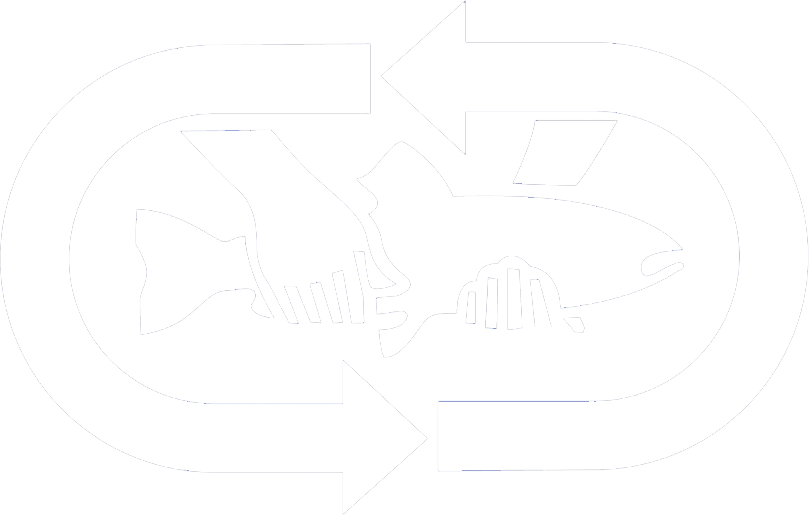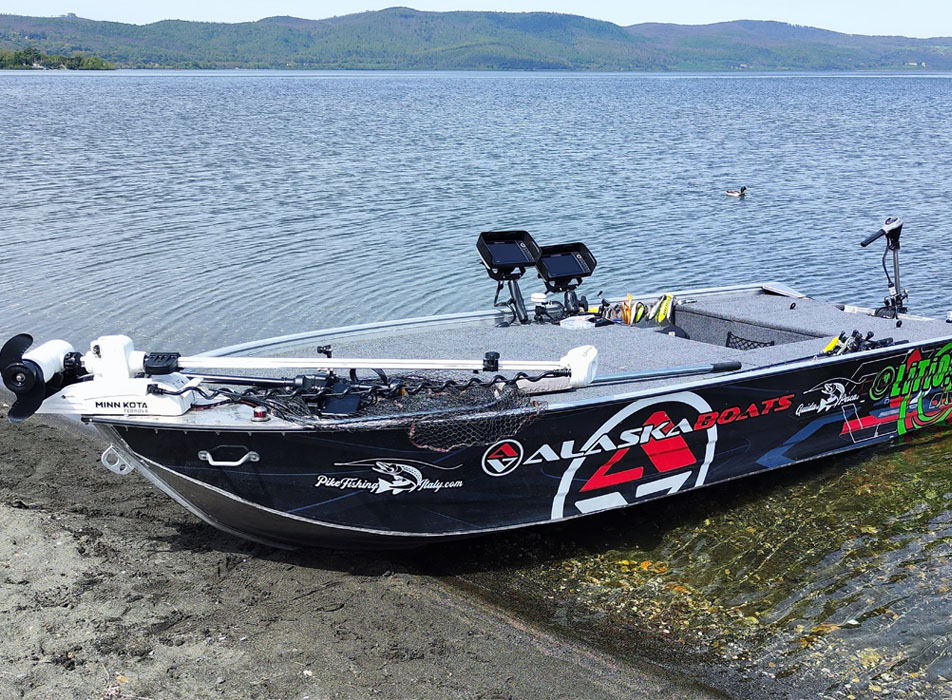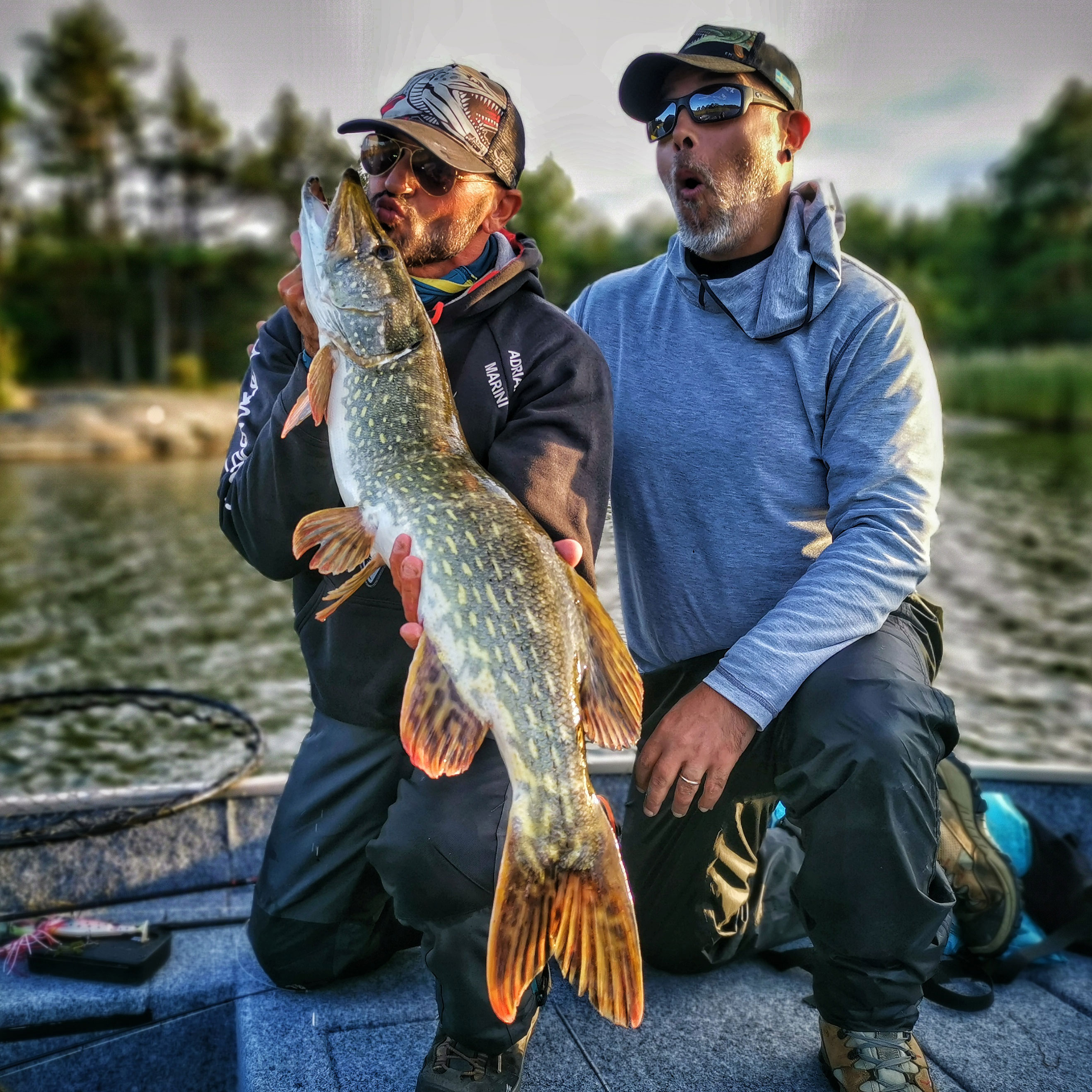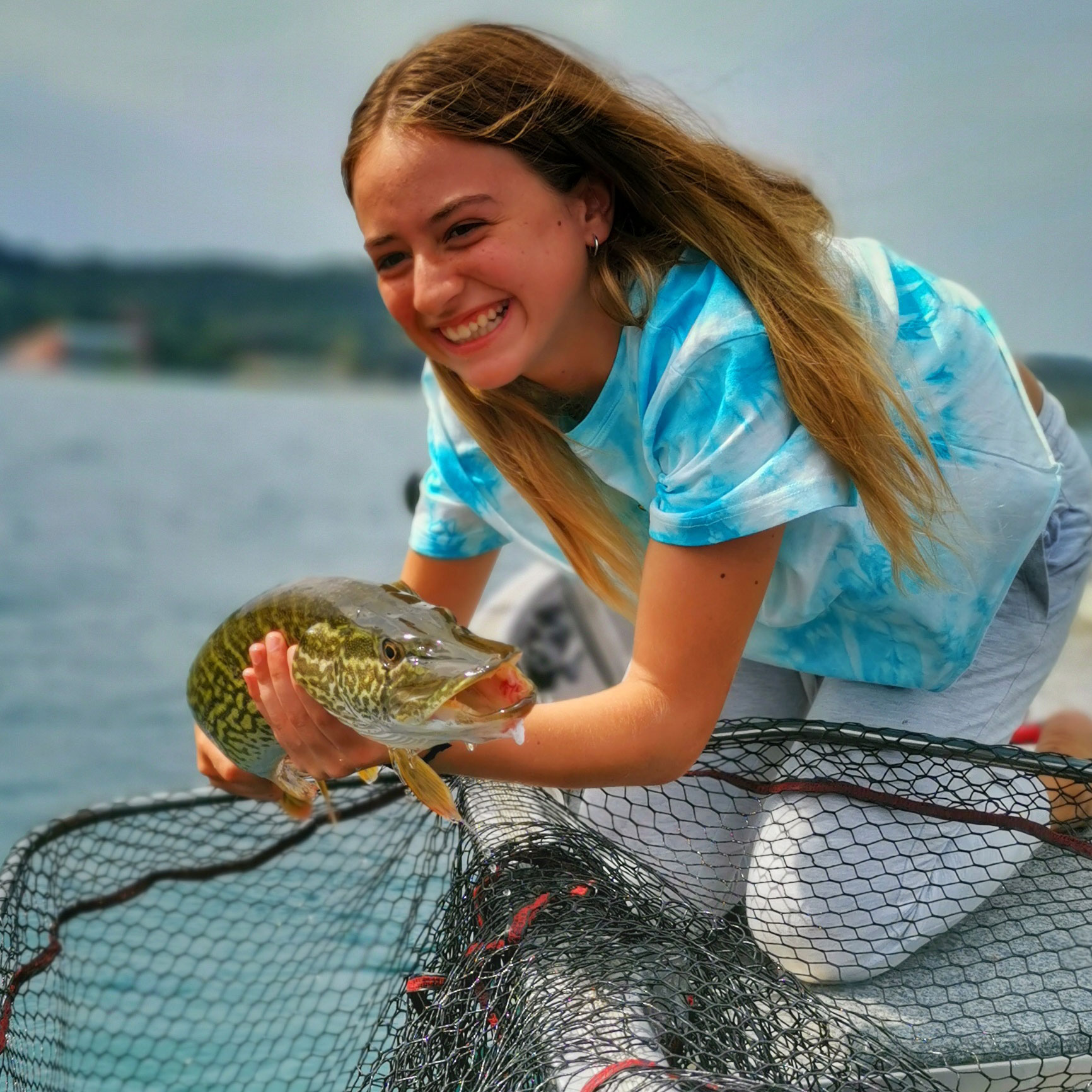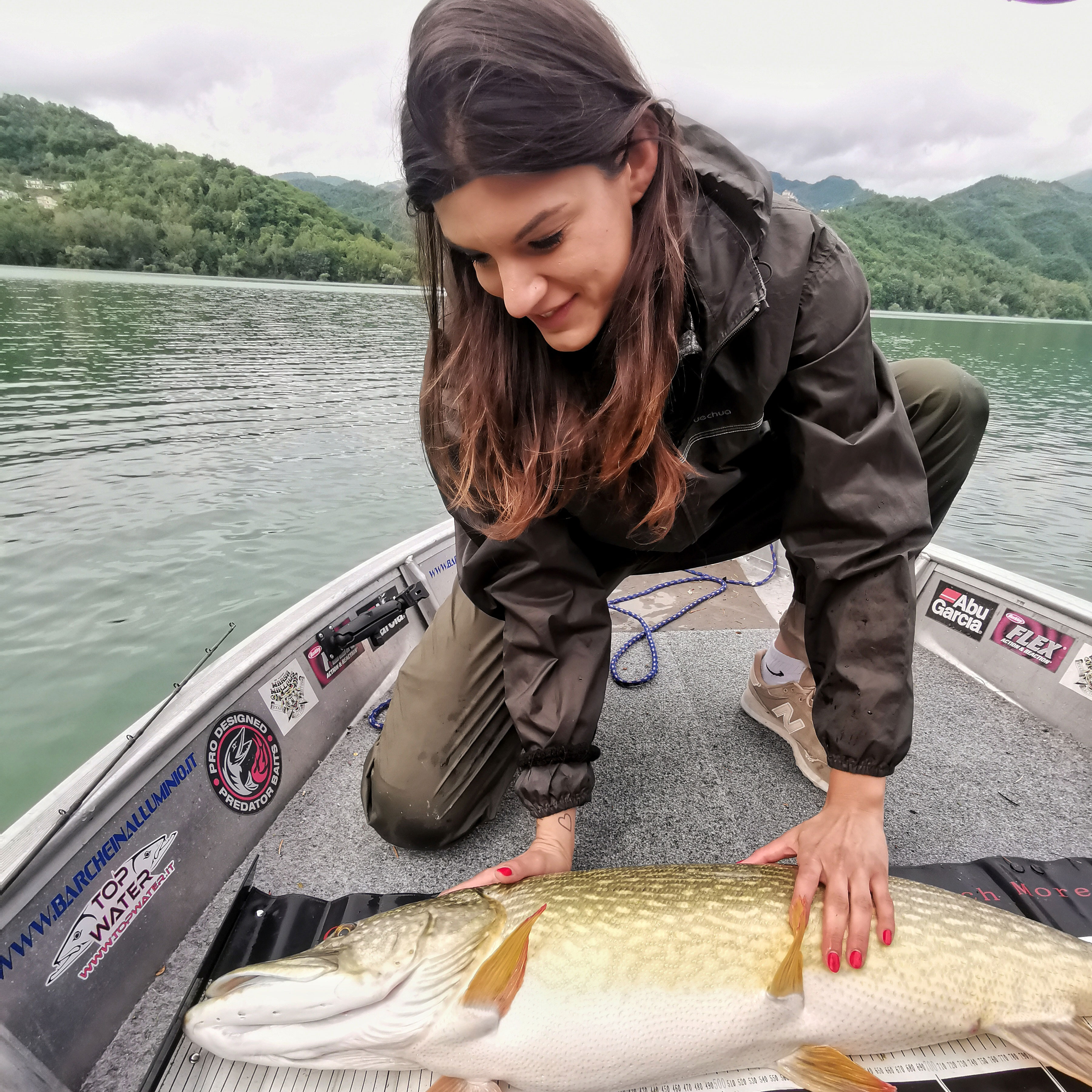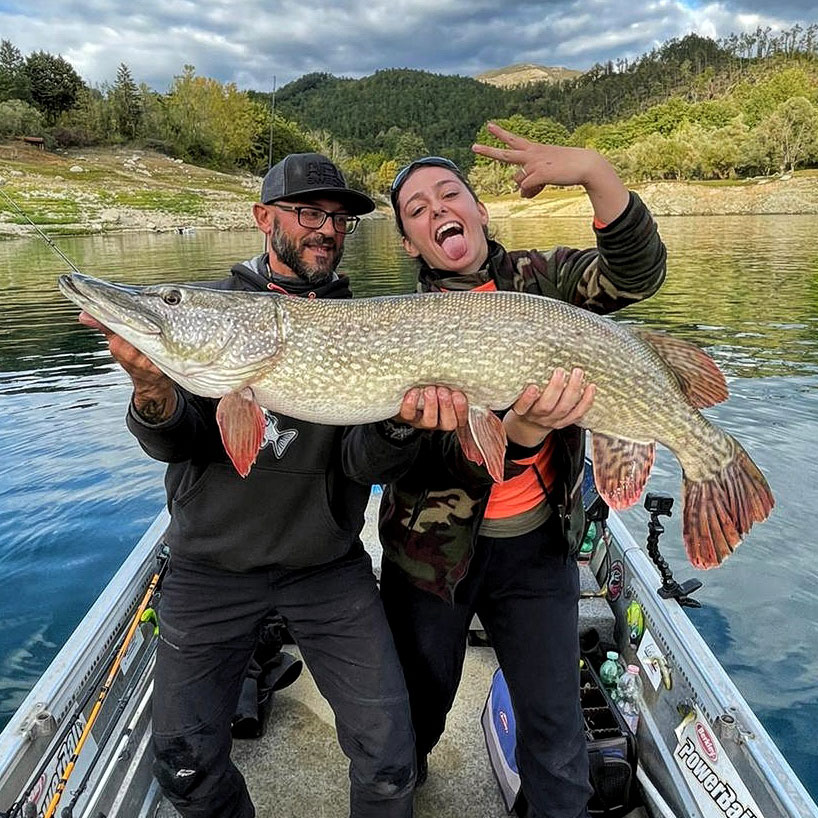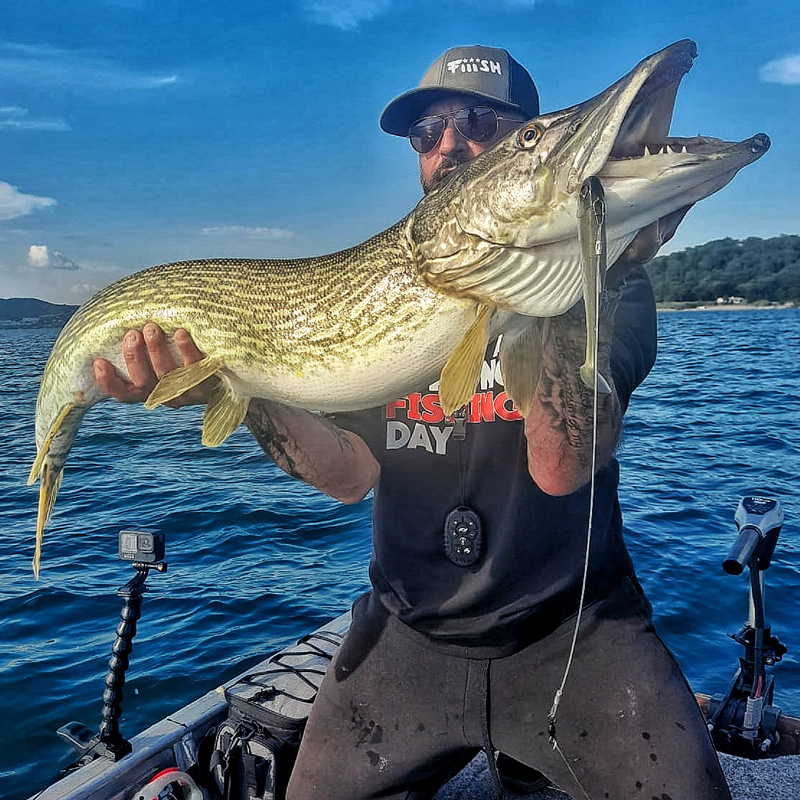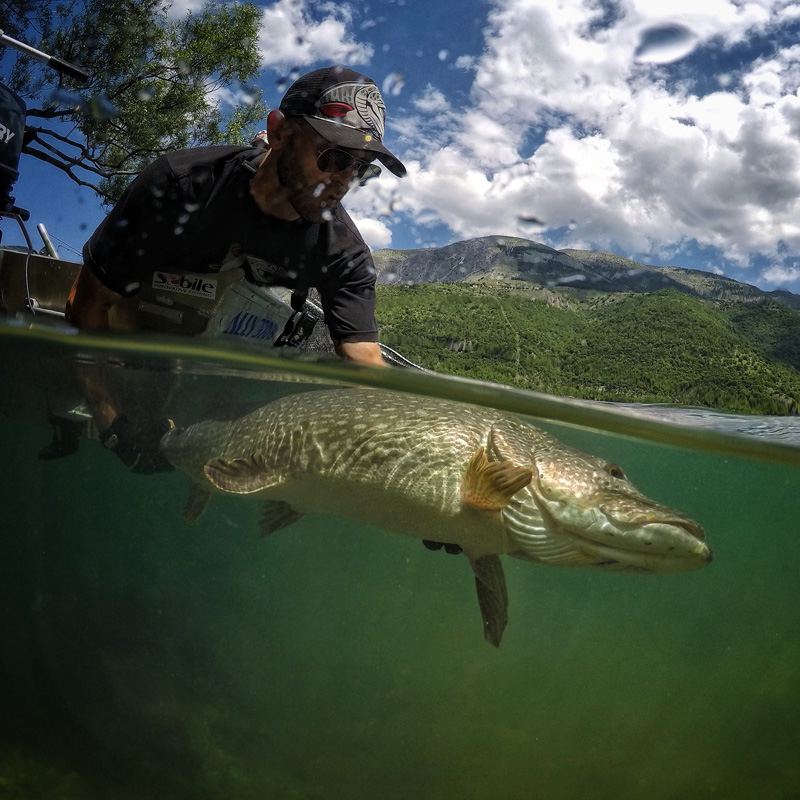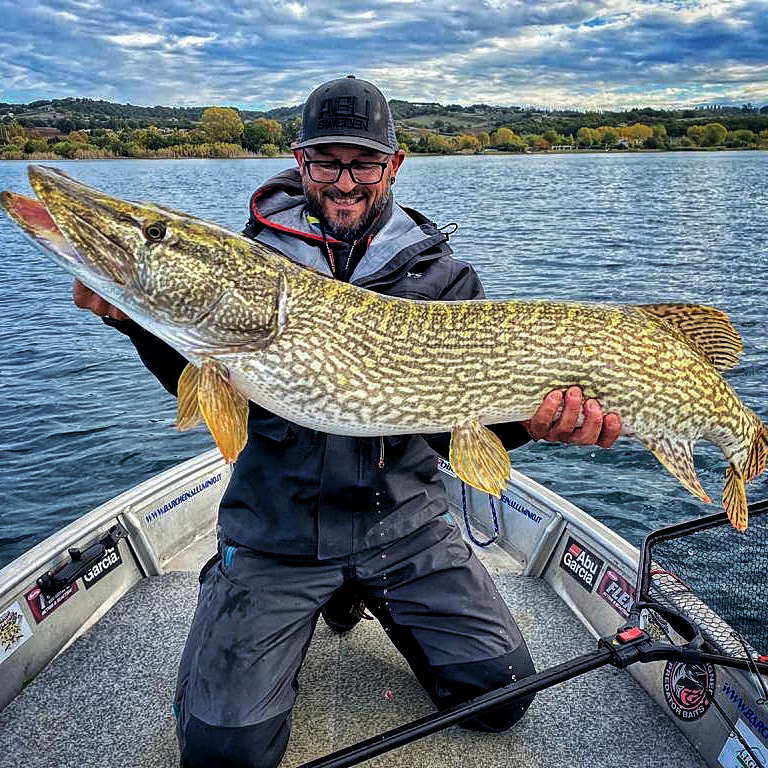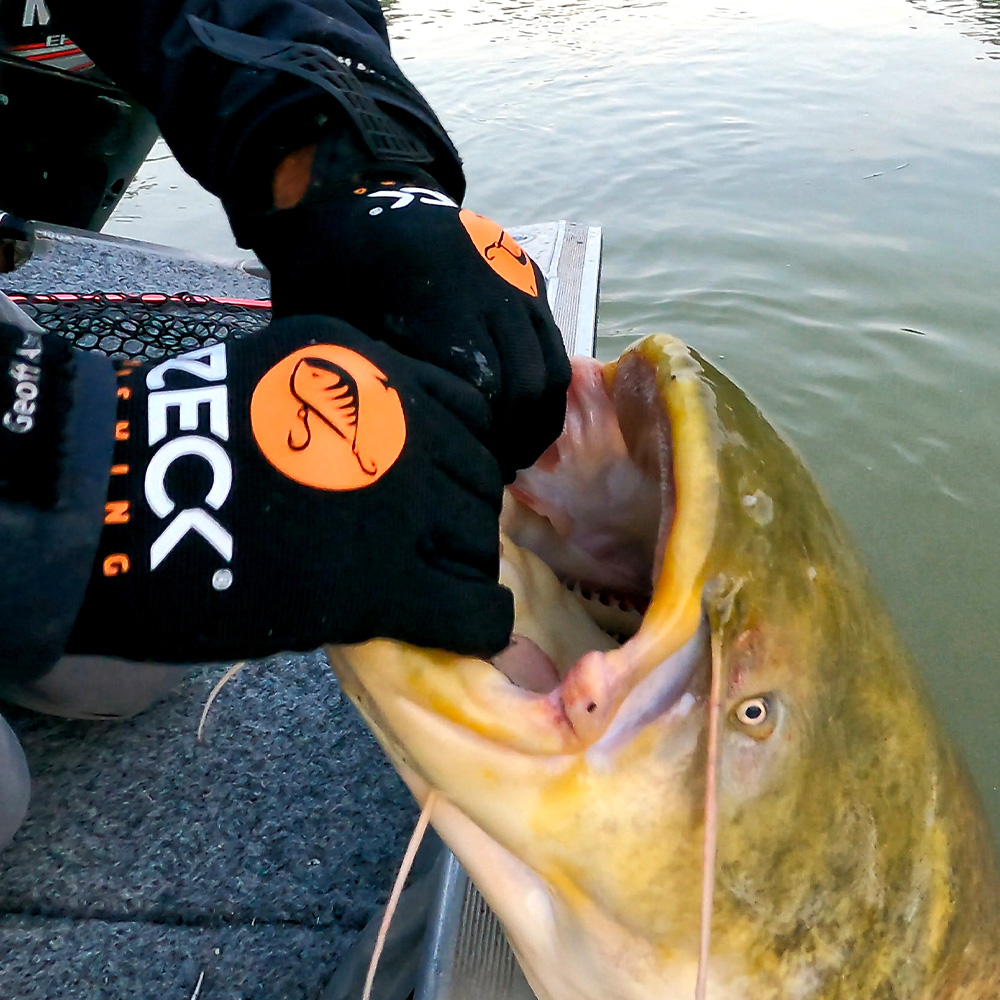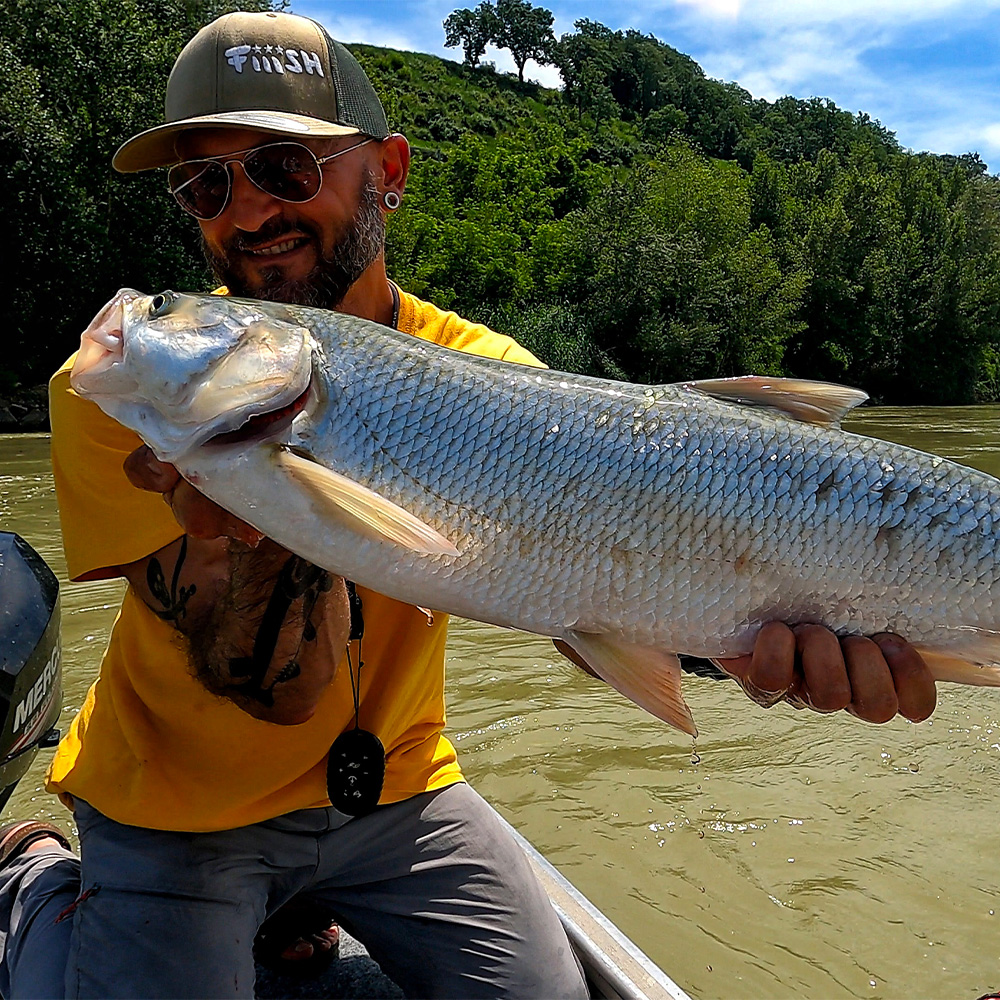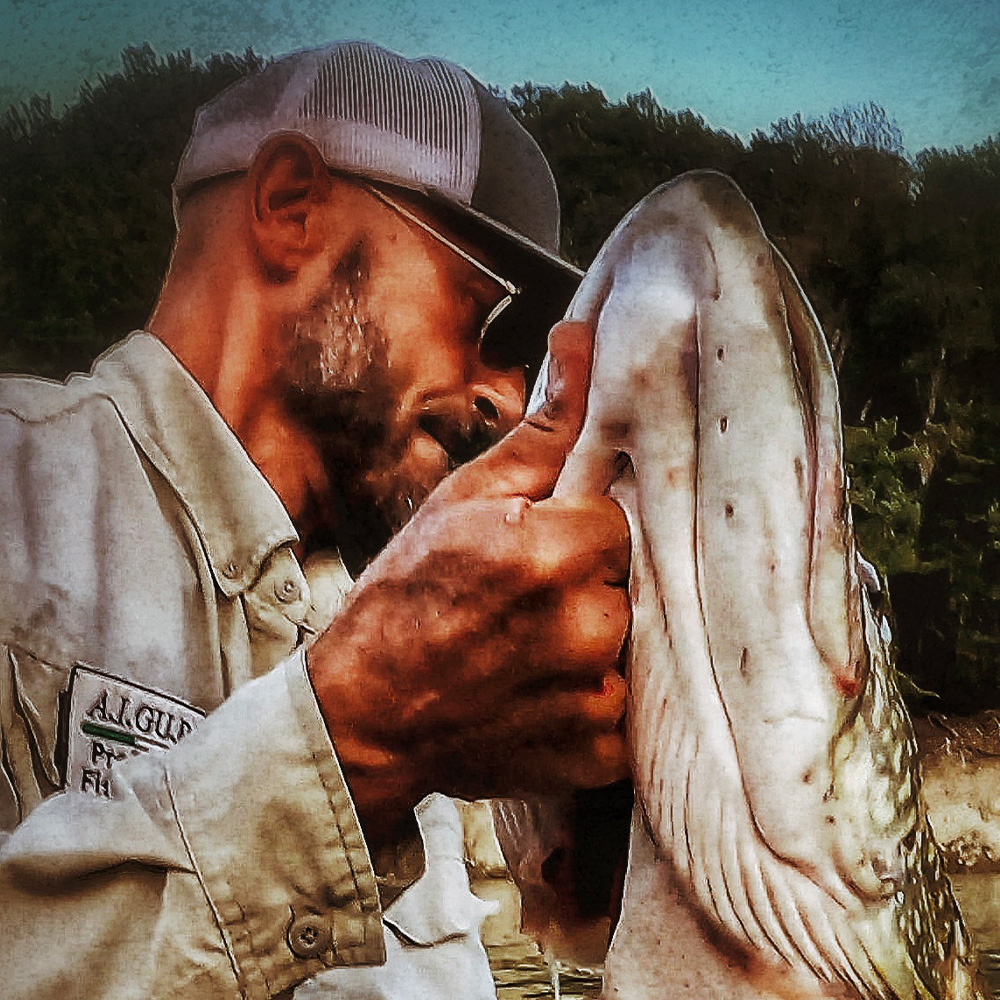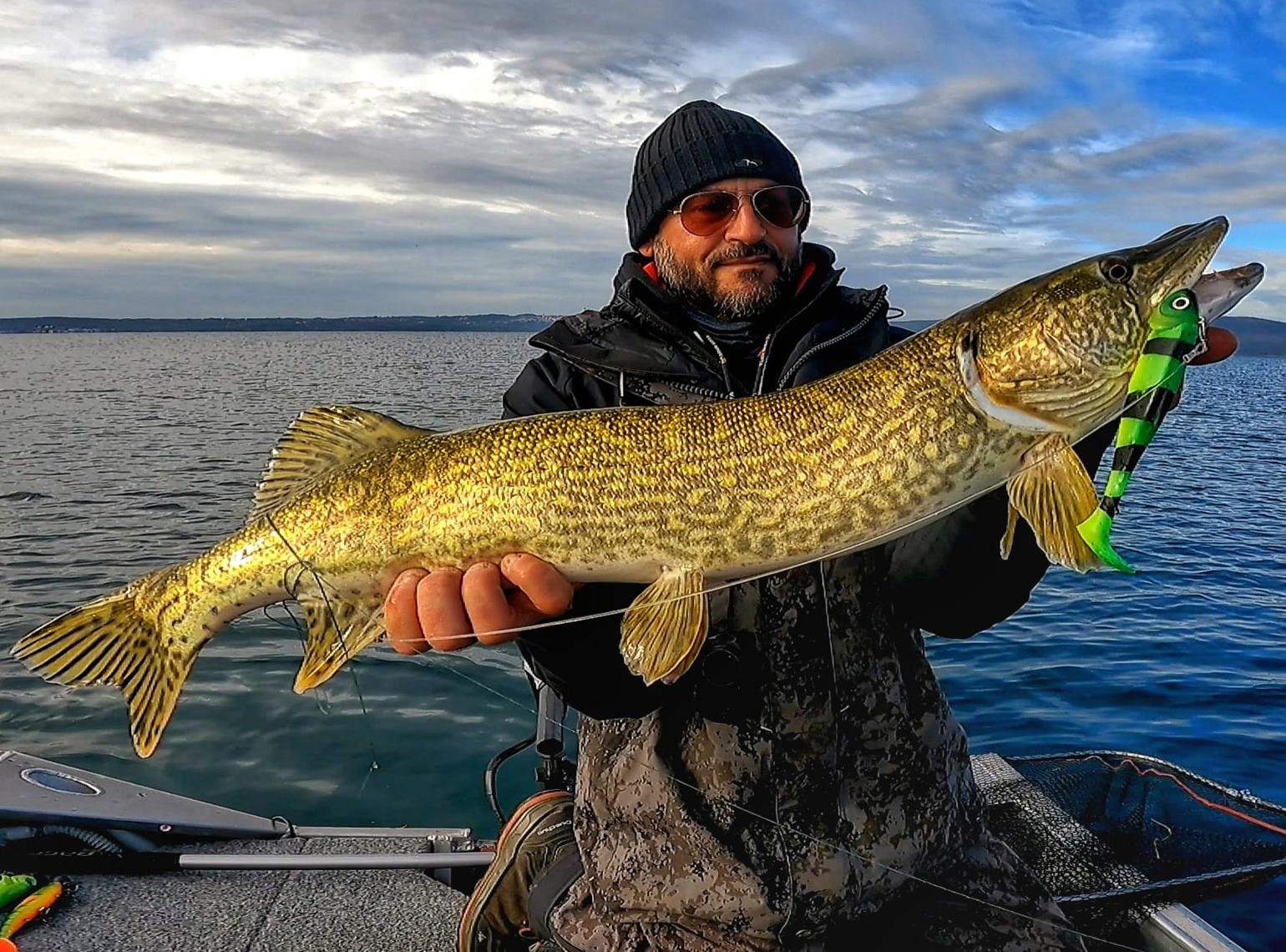
To build a good AssistHook to mount on shads in addition to jig heads or screw heads, you need to start with a basic scheme: 1 or 2 treble hooks (see photo).
Personally, I use a single treble hook for shads up to 20 cm and two treble hooks for larger shads. The length of the assist should be proportional to the length of the shad. When using a single treble hook, it should be positioned exactly in the center of the shad and secured with a steel spike or quick clip (see photo). It's essential to build AssistHooks with top-quality materials and significantly oversized strength; never underestimate the power of big pikes! I use 100 lbs swivels, stainless steel split rings, steel braided lines of at least 60 lbs, and high-quality treble hooks in sizes 1/0 or 2/0. Thanks to their modularity of rigging and versatility, shads can be used in any situation.
Personally, I've created combinations suitable for every spot and technique. For long casts, I use small tapered shads (with little rubber, so they're lightweight) rigged on a heavy screw head. This combination is one of the best for spinning when you need to cover a lot of distance.
I can make it slightly anti-snag by attaching the treble hook to the back of the shad instead of underneath. When fishing in cover, I opt for a jig head with a single hook, or in cases of extremely high snag risk, I mount the shad on a large offset hook. In this case, it's essential for the shad to have a very streamlined and slim shape to allow the hook to easily exit during the hookset. In freer waters or at the edges of cover like reeds or weeds, I can rig my shad to be as "hooked" as possible.
I use a jig head with a single hook, with the addition of an AssistHook with one or two hooks if the shad is very long. Most models are capable of working vertically, depending on the rigging we've created. However, to optimize this function, it's advisable to add weight to the swivel-type pendulum rig.
To switch between rigs and adjust our bait as needed for the environment we're fishing in, it's convenient to carry some spare materials. This may include jig heads and screw heads of various weights, spherical weights with rings, treble hooks, some large offset hooks, and several AssistHooks of varying lengths. This way, we'll always be able to create a perfect bait for every situation, with precise balance to work well at a certain depth and move perfectly within the presumed pike hunting area. As for color choice, I personally rely on instinct or trial and error.
Unfortunately, in pike fishing, there's no rule that works or helps us in choosing colors. Choosing natural colors for clear water and bright colors for murky water is recommended. However, sometimes the exact opposite works, sometimes it makes no difference at all.
You have to fish and try, fish and change, fish and fish...
Adriano Marini
To learn more:
Contacts INFO for Soft Bait- Part 2 - AssistHook
LAKES
| Lake Type | Vulcanic | |
| Altitude | 340 feet | |
| Surface | 22 miles2 | |
| Depth | 540 feet | |
| Distance from Rome | 24 miles | |
| Target | Pike, Bass |
| Lake Type | Artificial | |
| Altitude | 1760 feet | |
| Surface | 4 miles2 | |
| Depth | 285 feet | |
| Distance from Rome | 68 miles | |
| Target | Pike, Asp, Perch |
| Lake Type | Artificial | |
| Altitude | 1760 feet | |
| Surface | 2 miles2 | |
| Depth | 220 feet | |
| Distance from Rome | 65 miles | |
| Target | Pike, Asp, Perch |
| Lake Type | Vulcanic | |
| Altitude | 660 feet | |
| Surface | 1 miles2 | |
| Depth | 190 feet | |
| Distance from Rome | 24 miles | |
| Target | Pike, Bass |
| Lake Type | Artificial | |
| Altitude | 1210 feet | |
| Surface | 1 miles2 | |
| Depth | 62 feet | |
| Distance from Rome | 62 miles | |
| Target | Pike |
| Lake Type | Volcanic | |
| Altitude | 1000 feet | |
| Surface | 44 miles2 | |
| Depth | 134 feet | |
| Distance from Rome | 86 miles | |
| Target | Bass, Pike |

| Lake Type | Artificial | |
| Altitude | 2850 feet | |
| Surface | 1 miles2 | |
| Depth | 134 feet | |
| Distance from Rome | 86 miles | |
| Target | Pike, Perch |

| River | ||
| Altitude | 490 feet | |
| Spot Length | 27 miles | |
| Distance from Rome | 18 miles | |
| Target | Catfish, Asper, Chub |
BOAT
My boat is a 4355 alluminium alaska boat perfectly equipped for fishing, safe and unsinkable.
- Length 14 feet
- Engine 1 Mercury 20 Hp
- Engine 2 Rhino BLX 110 lbs 24 volt
- Bow Engine Minnkota Terrova 80 lbs 24 volt
- Fish Finder GPS 2 x Humminbird Helix MSI+
- Mega Live imaging
- Lithium Battery e 24 volt LitioStore
ADRIANO MARINI
BIO
My name is Adriano Marini and I am a professional AIGUPP fishing guide code ITA0108/21. I started fishing with my father at the age of 8. Through the years I have gained experience, by trying different techniques, to specialize in predators fishing; and I started practicing catch and release from a very young age. Since 2015 I have been a fishing guide with a specialization in pike fishing.
TV Series on Sky pesca TV "Pike Story". I am also a collaborator and editor about pike fishing for these magazines: Pesca spinning, Spinning passione and “Piscor magazine”. In 2015 together with Americo Rocchi we made the documentary: I segreti del luccio 2. My goal is to provide an unforgettable fishing experience: funny, educational and relaxing; always placing priority on nature respect and fish protection.

